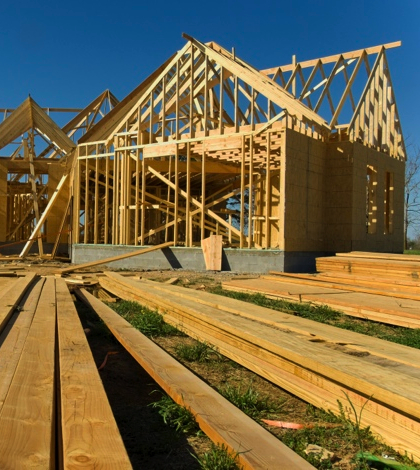Analysts say the market should continue to improve in 2014, but a return to the booming pre-recession housing industry isn’t expected this year and may never happen
While no one is predicting a return to the heady days of the mid-2000’s, the Inland Empire housing market should continue to improve this year. Exactly how far it comes back remains to be seen.
Distressed properties are expected to play a reduced role in the local housing market this year, which means that sales and prices should continue to improve as long as unemployment continues to decline and interest rates remain relatively low, according to several analysts familiar with the Inland housing market.
If recent housing start data is an accurate indicator, and it usually is, the Inland market should not lose ground during 2014, said Steve Johnson, director of Metrostudy’s Riverside office.
The two-county region – not including the Coachella Valley – recorded nearly 5,300 housing starts last year, a 38 percent increase compared with 2012, according to Metrostudy, a national data and consulting firm that provides information to the housing industry.
Johnson doesn’t believe the Inland region will tally as many housing starts this year as it did last year. Among other factors, the Federal Housing Administration has made it more difficult to get a loan for homes priced between $350,000 and $500,000, which is where most homes in San Bernardino and Riverside counties are priced.
FHA officials made those changes to avoid being overwhelmed with underwater mortgages and bad housing stock, and the long-term impact of those changes is impossible to predict, Johnson said.
Unemployment, by far the biggest factor in determining whether a housing market is up or down, also remains a problem: the Inland unemployment rate has trended down recently but remains at about 9.5 percent, and no one knows for sure where it will be 12 months from now.
Even with those negatives, there’s no reason the Inland Empire can’t add to its housing starts by at least 12 to 15 percent this year, and that would be more than enough to keep the housing market on track, Johnson said.
“We aren’t going to be back to pre-recession levels, but it does look like we’re going to have a good year,” Johnson said. “Because of the FHA changes, some people who are ready to buy a house will have to look to other markets, maybe along the Interstate 215 corridor. But we still should be OK.”
So should California, according to the California Association of Realtors. The Los Angeles trade association is predicting a bounce-back year for the state’s housing industry, with sales of single-family homes expected to rise 3.2 percent, to approximately 440,000 units.
The median price of a home statewide is expected to rise six percent, to $432,800 this year, on top of a 28 percent increase in 2013. The association is predicting a 2.1 percent drop in overall sales.
Overall, the slow but steady improvement the state’s housing market experienced in 2013 is expected to continue through the end of this year, said Don Faught, the association’s president.
“We expect to see a strong demand for home ownership, as buyers who may have been competing with investors and facing an extreme shortage of available housing return from the sidelines,” Faught said in a statement in October, when the association released its 2014 forecast.
One reason both the state and the Inland Empire housing markets are likely to improve this year is that most of the underwater mortgages that helped cause the recession have already through the system, said Kimberly Ritter-Martinez, economist with the Los Angeles County Economic Development Corp..
The number of bad mortgages in the state’s housing resale market dropped to 6.3 percent in November, down from 15.4 percent in November 2012, according to the California Homebuilding Foundation.
In February 2009, at the height of the state’s housing crisis, 56.7 percent of the state’s resale market involved underwater mortgages, meaning mortgages that were greater than the value of the house, according to the foundation.
That means more single-family homes should be built during the next 12 months, since homebuilders will no longer have to compete with the super-discount resale prices created by the mortgage crisis.
“We aren’t there yet, but we’re definitely moving back to a more normal market,” Ritter-Martinez said. “With the bad mortgages going away, more people have equity in their homes again, so more people will be looking to move up. That means more houses will get built, but solving the inventory problem will take time.”
The Inland region added 7,993 housing starts through November of last year, and likely will reach about 9,000 starts when the December data is added to the equation.
Slightly more than 6,000 starts were added during all of 2012, according to the foundation, a research and education center in Sacramento.
Unlike Metrostudy, the foundation’s numbers include the Coachella Valley. To put those number in perspective, in 2004, when the Inland housing market was booming, developers pulled nearly 52,700 permits to build single-family homes in Riverside and San Bernardino counties.
“It’s a good sign when there are more starts in 11 months than there were in the entire previous year, but I think we should still be cautiously optimistic,” Ritter-Martinez said. “It’s the start of a recovery. The [Inland] market, like the state, is nowhere near back to peak levels.”
Median home prices finished strong in Riverside and San Bernardino counties in December, up 20.1 percent and 19.4 percent respectively year-to-year, according to DataQuick in San Diego, which issues monthly reports on the Southern California real estate market.
Single-family home prices have been improving during the last six months, and that trend should get even stronger throughout 2014, said Mark Dowling, chief executive officer of the Inland Valley Association of Realtors in Riverside.
“We’re expecting to see even stronger price growth during the second and third quarters of this year, and then some equilibrium in pricing as we get close to the end of the year,” Dowling said.
Dowling expressed some concern about the changes made by the FHA to its loan program, changes he said could impact the Inland Empire more than other regions.
“I could see that hurting the Ontario-Rancho Cucamonga-Corona market in particular,” Dowling said.
 IE Business Daily Business news for the Inland Empire.
IE Business Daily Business news for the Inland Empire.


